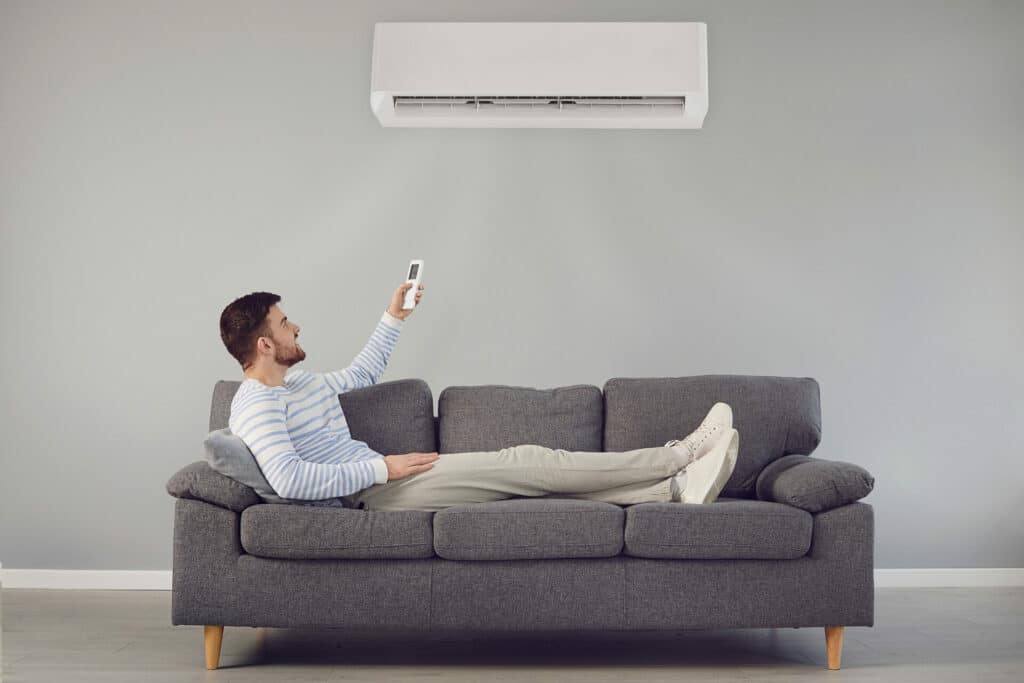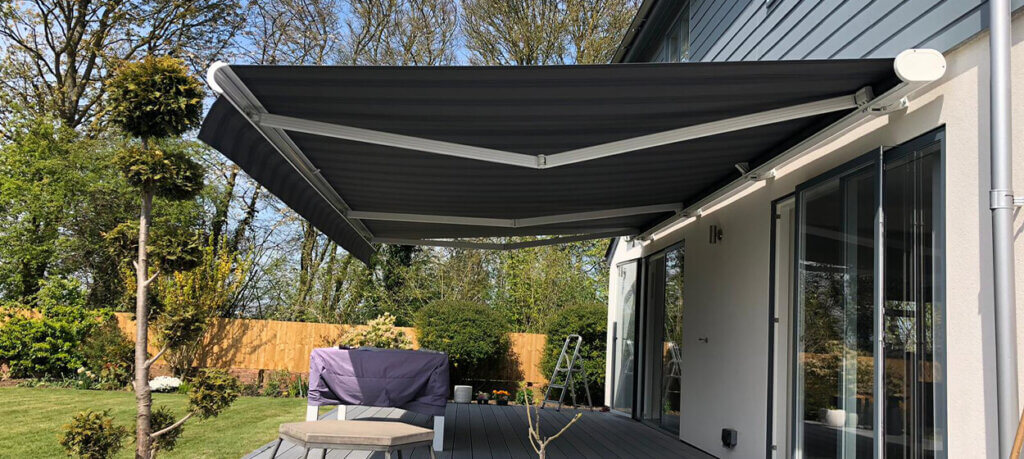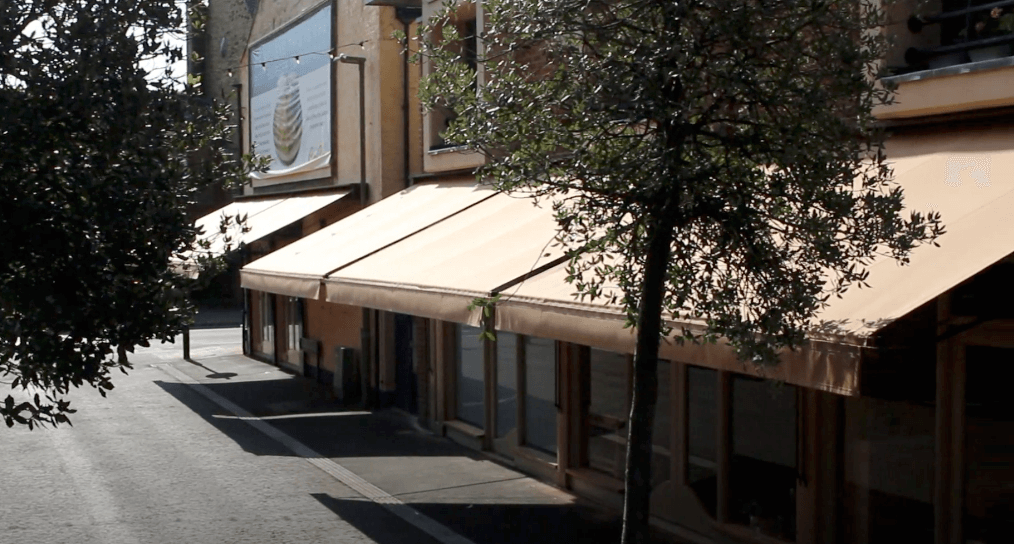According to recent market analyses, there will be significant growth in demand for air conditioning units in both British and European markets. Coming on the back of constant heat waves and rising temperatures, households are naturally looking for solutions.
However, purchasing and installing an air conditioning unit is a significant investment that will impact your property value, your lifestyle, and your energy bills. It is important to ask how much it’ll truly cost and whether there are viable alternatives before finalising your decision.
These are precisely the questions we ask and aim to answer here. As the world becomes hotter, we’ll all have to make adjustments to our homes and lifestyles, and this blog post will help you learn whether installing and using air conditioning is the right adjustment!
The Cost of an Air Conditioning System
Many homeowners are under the mistaken impression that the number they see next to an air conditioning unit in a catalogue or a marketing brochure presents the totality of the cost of an AC system. This is false.
To learn how much an air conditioner will cost you in totality and properly budget for it, there are three primary costs you have to take into account. The cost of the air conditioning unit itself, the cost of its installation, and, last but not least, the running costs of operating an air conditioner.
There are a lot of complexities that go into each one of these costs, and in this section, we’ll go over each one in detail:
Cost of the Air Conditioning Unit
The central air conditioning unit acts as the heart of the system and represents most of the cost you’ll pay upfront. It is responsible for both cooling and heating, and its size, quality, efficiency, and type will impact both installation costs and ongoing running costs!
The cost of a new air conditioning system varies a lot and can be anywhere from 1,500 to over 10,000 pounds. How much you should pay will depend on your budget and requirements.
Factors That Impact the Cost of Air Conditioning Units
Type of the Air Conditioning Unit
Air conditioners come in multiple types: You have portable air conditioning units, split air conditioner systems, central air conditioning units, window air conditioners, geothermal and evaporative ACs, and more!
Central AC units are substantially costlier, but they’re far more effective in cooling and heating larger buildings. Meanwhile, both a portable and a window air conditioner can be easily installed and provide on-demand heating and cooling at affordable prices, but they’re inefficient and consume substantially more energy.
A split air conditioner system is in the middle ground in size and efficiency between central ACs and window/portable air conditioning units. Split air conditioners have two primary components: An outdoor unit that absorbs heating or cooling, and an indoor unit that disseminates the chilled/warmed air.
Size of the Air Conditioning Unit
Naturally, as with any other appliance, the bigger the size of the air conditioning unit, the more it’ll cost, but, unlike other appliances, there is a lot of variety in the sizes air conditioning systems come in: from small portable units that are merely a few kilograms to large central systems that exceed 2-3 tonnes in size.
Instead of weight, however, the size of air conditioners is typically measured by their cooling capacity denoted by BTU (British Thermal Units). Typically, 20 BTUs are needed to heat or cool a single square foot comfortably. By relying on BTUs, you can easily determine which AC unit size is sufficient to properly heat your home or building.
Brand/Features of the Air Conditioning Unit
Just a decade or two ago, an air conditioner being operated through a remote control was considered a “luxury feature.” The chiller industry has seen significant advancements since. You have air conditioners that are fitted with multiple thermostats and can adjust temperatures on a case-by-case basis, you have air conditioners that can directly integrate into your central heating system, and you have smart air conditioners that can communicate with your phone and computer and provide several features and advanced configurations.
Naturally, if you want these features or need the guarantees of quality represented by a popular, reliable brand, they represent additional costs that you need to take into account.

Air Conditioner Installation Cost
Now that you’ve decided what air conditioner to get, you’re not done. It needs to be properly installed before it is operational. While this might sound innocuous at first glance, air conditioner installation costs can run a homeowner anywhere from 1,000 to 8,000 pounds and more.
When you install an air conditioner, it might require home renovations, changes to its structure, and even reconstruction work that requires a permit from UK authorities. However, there are a few factors that decide which measures specifically you need to take to install an AC unit:
Factors that Impact Air Conditioner Installation Cost
Layout of the Building
The layout and structure of the building is the biggest factor in AC installation costs. If your home has ready room for an AC unit(s), excellent airflow in the interior, and existing infrastructure to take advantage of central heating, then the installation of the air conditioner will be relatively straightforward. Vice versa, if the home has none of the above qualities, then it’ll require significant renovation work to properly integrate and make use of air conditioning.
Type and Size of the Air Conditioner
The type and size of the air conditioner not only impact the price of the unit itself, but they also impact installation costs as well. Larger air conditioners require more space and accommodations in design during installation.
But more important is the air conditioner type. The cost of installing a portable air conditioner is minimal. Split air conditioners consist of multiple units, so their installation is more complicated, but they operate in a self-contained environment, so aside from changes needed to place and connect the units, they require minimal change to the structure of the building. Meanwhile, central AC units need to be integrated directly into the building’s central heating system, so if it doesn’t already have one or has one that’s incompatible with the AC, significant changes need to be made.
Labour Costs
The job of installing an AC unit is both complicated and dangerous, and if you don’t have prior experience, it is a good idea to leave the installation up to an HVAC contractor, which, naturally, means that you need to account for the labour costs as well. Sadly, though, it almost entirely depend on your local labour market conditions, so you can only estimate them by getting in touch with local HVAC contractors!
Running Costs of Operating an Air Conditioner
The, rather substantial, energy consumed by your air conditioning system will often be the single largest contributor to your electricity bills. No account of air conditioning cost will be complete without taking into account the running costs of the system, which include energy bills as well as maintenance costs and the cost of replacing refrigerants.
If operated 24/7, an air conditioner can run a household upwards of 10,000 pounds in energy bills and 150-300 pounds in maintenance bills. However, as with other costs, there are multiple factors affecting the operating price of an AC.
Why You Should Consider Alternatives to Air Conditioning
As we experience record heat year after year, many homeowners’ first instinct will be to consider installing an air conditioner, often touted as the only permanent solution to hot weather. But does this assumption hold? Do we truly need air conditioners going forward?
Here are some reasons why you should at least consider some alternatives before deciding to purchase an AC unit:
Air Conditioning Cost
We detailed all the costs associated with buying, installing, and operating an air conditioning system above, and a consistent thread that held regardless of AC type or size was the fact that the costs were substantial. You have to ask yourself if an AC system is truly worth it given these costs!
Environmental Impact
From the refrigerants it uses to the amount of energy it consumes, air conditioning is far from environmentally friendly. Air conditioning, alone, is responsible for about 4% of the world’s greenhouse gas emissions, That’s more than the impact of international aviation, which, itself, is known for being wasteful. Responding to rising temperatures by adopting and using one of the primary drivers of the said rise is simply not sustainable.
Nonessential
Not only are the costs substantial and the environmental impact heavy, but an AC system might not even be necessary at all. Many traditional and modern alternatives to AC systems can effectively cool and heat your home. It is worth exploring them before you commit!
Alternatives to Air Conditioning Systems

From a retractable patio awning to landscaping, there are many affordable, environmentally friendly, and effective alternatives to air conditioning that you should explore before you commit to investing in an AC system:
Bespoke Awnings
Awnings have been an effective way to control temperatures for more than a century, and this is only truer now thanks to modern awnings that rely on electric operation and can be operated through a remote control.
Benefits of Having an Awning Installed
- Affordable: The cost of an awning and its installation is substantially lower than the cost of an AC unit, not even taking into account energy bills and fuel costs. If you want affordability, there’s simply no comparison. You should go with awnings!
- Accessible: Patio awnings aren’t only incredibly simple to install, but thanks to electric operation, you can control all its functionalities through a remote control.
- Options: From size to shape and colour, a bespoke awning can be designed to your exact specifications. Going with an awning is an excellent way to have complete freedom over the design and layout of the space.
- Multi-purpose: From a patio awning to a retractable awning for storefronts, they do far more than regulate temperatures and create shading. Awnings can act as branding, can improve your home’s curb appeal, and can create excellent outdoor living spaces!
- Environmentally friendly: Awnings don’t consume fuel, don’t rely on environmentally harmful refrigerants, and don’t need rare-earth minerals for their construction. In every way, they simply have a much smaller environmental footprint compared to air conditioners.
A retractable patio awning might not give you the same fine control over temperature an AC does, but its affordability, flexibility, and minimal environmental footprint more than make up for it!


